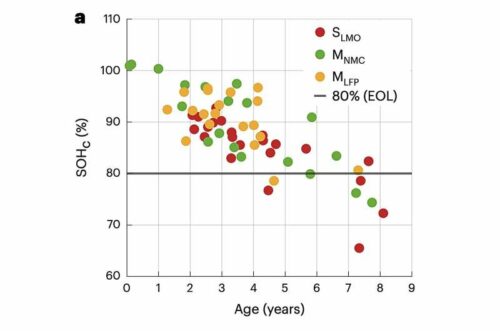Home solar use is increasing, but accurately measuring battery life remains challenging; a new method offers better accuracy.

The use of solar panels in homes is increasing globally, leading to a demand for home storage batteries to save excess solar energy for later use. These systems help reduce reliance on the electric grid. However, effective methods to measure how these batteries degrade over time are still lacking, which is important for improving solar energy use in homes. Researchers from RWTH Aachen University, JARA-Energy, and ACCURE Battery Intelligence GmbH have developed a scalable technique for estimating capacity that can reliably evaluate the capacity of residential storage systems.
The team proposed a method to estimate the capacity of home storage systems through a three-step process. Initially, the method involves identifying when a storage system is fully charged and when it is depleted. The next step is to calculate the available capacity between these two states.
The method identifies the fully charged and depleted states by looking for relaxation processes within specific voltage ranges. By using coulomb counting with an offset current correction, the team can estimate the capacity. From a diagnostics perspective, home storage systems are notable because they regularly complete full charge-discharge cycles from spring to fall, unlike many other applications, such as electric vehicles.
The team regularly conducted field capacity tests to validate their method and expressed hope that it would contribute to developing diagnostic methods required by the European Union for establishing customer transparency.
A significant achievement of this research group is the introduction of a promising technique that manufacturers and solar energy companies might use to gauge the capacity of their energy storage systems.
Moreover, the team compiled a comprehensive dataset with data spanning 106 system years on home storage systems, which could support further studies in this field or aid in training computational models.
After pinpointing the capacity loss, the team plans to explore the underlying degradation modes causing it. They are also creating new methods to estimate the state of health, for instance, by analyzing voltage relaxation phases or internal resistance.
Reference: Jan Figgener et al, Multi-year field measurements of home storage systems and their use in capacity estimation, Nature Energy (2024). DOI: 10.1038/s41560-024-01620-9.












